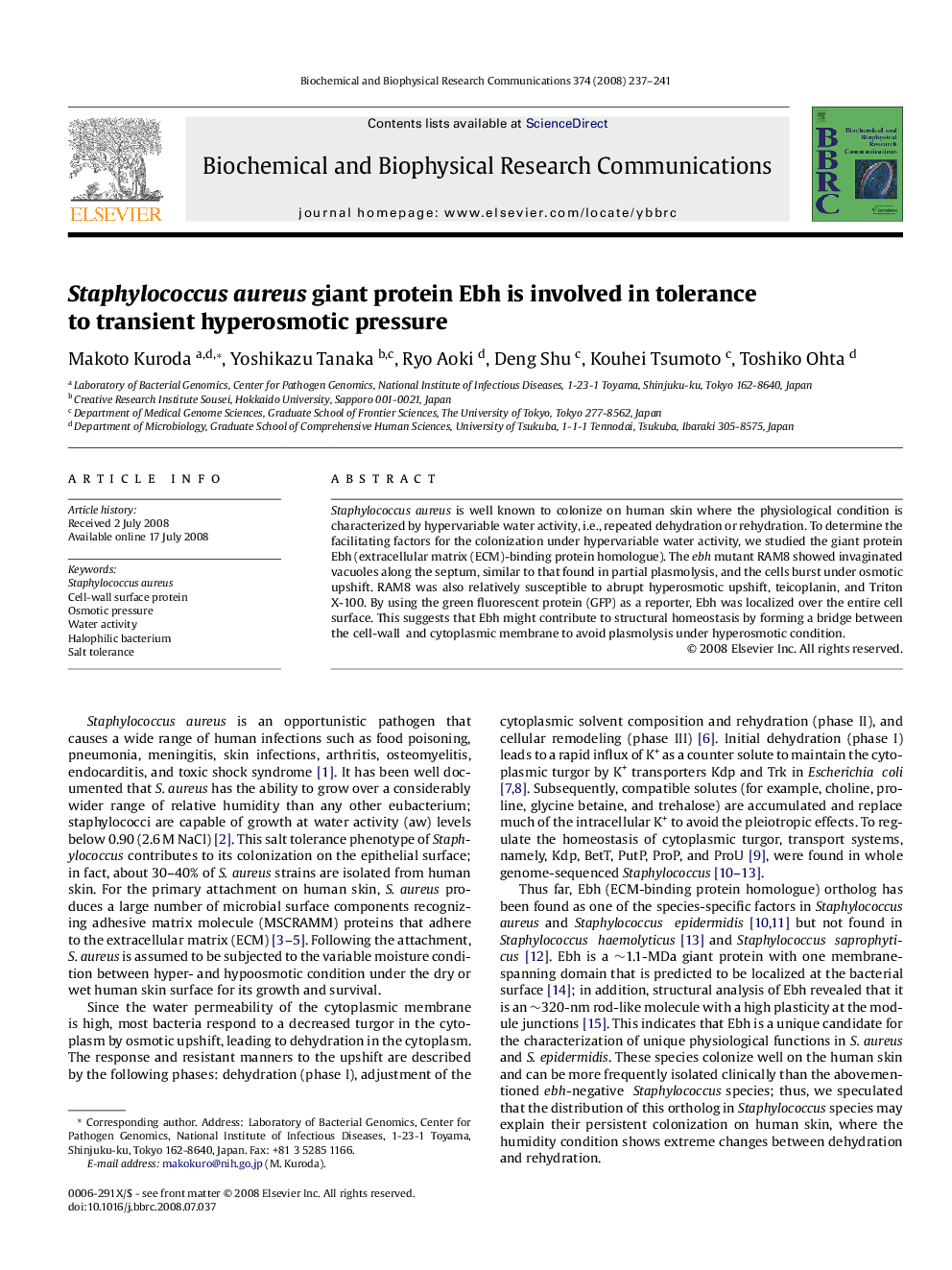| Article ID | Journal | Published Year | Pages | File Type |
|---|---|---|---|---|
| 1934925 | Biochemical and Biophysical Research Communications | 2008 | 5 Pages |
Staphylococcus aureus is well known to colonize on human skin where the physiological condition is characterized by hypervariable water activity, i.e., repeated dehydration or rehydration. To determine the facilitating factors for the colonization under hypervariable water activity, we studied the giant protein Ebh (extracellular matrix (ECM)-binding protein homologue). The ebh mutant RAM8 showed invaginated vacuoles along the septum, similar to that found in partial plasmolysis, and the cells burst under osmotic upshift. RAM8 was also relatively susceptible to abrupt hyperosmotic upshift, teicoplanin, and Triton X-100. By using the green fluorescent protein (GFP) as a reporter, Ebh was localized over the entire cell surface. This suggests that Ebh might contribute to structural homeostasis by forming a bridge between the cell-wall and cytoplasmic membrane to avoid plasmolysis under hyperosmotic condition.
